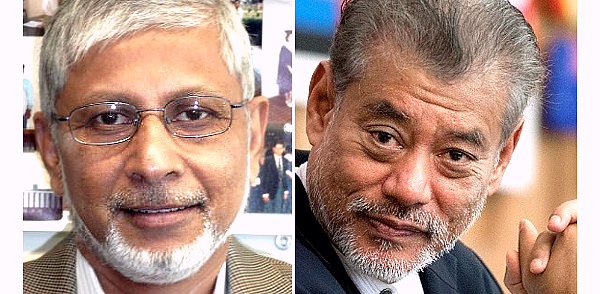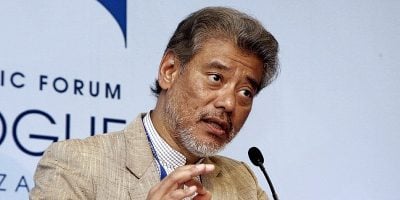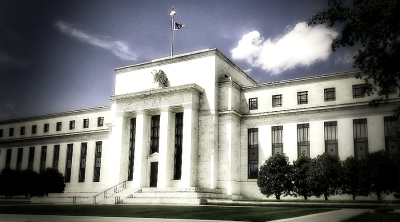
Central bank policies have often worsened economic crises instead of resolving them. By raising interest rates in response to inflation, they often exacerbate, rather than mitigate business cycles and inflation.
Neither gods nor maestros
US Federal Reserve Bank chair Jerome Powell has admitted: “Whether we can execute a soft landing or not, it may actually depend on factors that we don’t control.” He conceded, “What we can control is demand, we can’t really affect supply with our policies. And supply is a big part of the story here”.
Hence, decision-makers must consider more appropriate policy tools. Rejecting ‘one size fits all’ formulas, including simply raising interest rates, anti-inflationary measures should be designed as appropriate. Instead of squelching demand by raising interest rates, supply could be enhanced.
Thus, Milton Friedman – whom many central bankers still worship – blamed the 1930s’ Great Depression on the US Fed. Instead of providing liquidity support to businesses struggling with short-term cash-flow problems, it squeezed credit, crushing economic activity.
Similarly, before becoming Fed chair, Ben Bernanke’s research team concluded, “an important part of the effect of oil price shocks [in the 1970s] on the economy results not from the change in oil prices, per se, but from the resulting tightening of monetary policy”.
Adverse impacts of the 1970s’ oil price shocks were worsened by the reactions of monetary policymakers, which caused stagflation. That is, US Fed and other central bank interventions caused economic stagnation without mitigating inflation.
Likewise, the longest US recession after the Great Depression, during the 1980s, was due to interest rate hikes by Fed chair Paul Volcker. A recent New York Times op-ed warned, “The Powell pivot to tighter money in 2021 is the equivalent of Mr. Volcker’s 1981 move” and “the 2020s economy could resemble the 1980s”.
Monetary policy for supply shocks?
Food prices surged in 2011 due to weather-related events ruining harvests in major food producing nations, such as Australia and Russia. Meanwhile, fuel prices soared with political turmoil in the Middle East.
However, Boston Fed head Eric Rosengren argued, “tightening monetary policy solely in response to contractionary supply shocks would likely make the impact of the shocks worse for households and businesses”.
Referring to Boston Fed research, he noted commodity price changes did not affect the long-run inflation rate. Other research has also concluded that commodity price shocks are less likely to be inflationary.
This reduced inflationary impact has been attributed to ‘structural changes’ such as workers’ diminished bargaining power due to labor market deregulation, technological innovation and globalization.
Hence, central banks are no longer expected to respond strongly to food and fuel price increases. Policymakers should not respond aggressively to supply shocks – often symptomatic of broader macroeconomic developments.
Instead, central banks should identify the deeper causes of food and fuel price rises, only responding appropriately to them. Wrong policy responses can compound, rather than mitigate problems.
Appropriate innovations
A former Philippines central bank Governor Amando M. Tetangco, Jr noted it had not responded strongly to higher food and fuel prices in 2004. He stressed, “authorities should ignore changes in the price of things that they cannot control”.
Tetangco warned, “the required policy response is not… straightforward… Thus policy makers will need to make a choice between bringing down inflation and raising output growth”. He emphasized, “a real sector supply side response may be more appropriate in addressing the pressure on prices”.
Thus, instead of restricting credit indiscriminately, financing constraints on desired industries (e.g., renewable energy) should be eased. Enterprises deemed inefficient or undesirable – e.g., polluters or those engaged in speculation – should have less access to the limited financing available.
This requires designing macroeconomic policies to enable dynamic new investments, technologies and economic diversification. Instead of reacting with blunt interest rate policy tools, policymakers should know how fiscal and monetary policy tools interact and impact various economic activities.
Used well, these can unlock supply bottlenecks, promote desired investments and enhance productivity. As no one size fits all, each policy objective will need appropriate, customized, often innovative tools.
Lessons from China
China’s central bank, the People’s Bank of China (PBOC), developed “structural monetary policy” tools and new lending programs to help victims of COVID-19. These ensured ample interbank liquidity, supported credit growth, and strengthened domestic supply chains.
Outstanding loans to small and micro businesses rose 25% to 20.8 trillion renminbi by March 2022 from a year before. By January, the interest rate for loans to over 48 million small and medium enterprises had dropped to 4.5%, the lowest level since 1978.
The PBOC has also provided banks with loan funds for promising, innovative and creditworthy companies, e.g., involved in renewable energy and digital technologies. It thus achieves three goals: fostering growth, maintaining debt at sustainable levels, and ‘green transformation’.
Defying global trends, China’s ‘factory-gate’ (or producer price) inflation fell to a one-year low in April 2022 as the PBOC eased supply chains and stabilized commodity prices. Although consumer prices have risen with COVID-19 lockdowns, the increases have remained relatively benign so far.
In short, the PBOC has coordinated monetary policy with both fiscal and industrial policies to boost confidence, promote desired investments and achieve stable growth. It maintains financial stability and policy independence by regulating capital flows, thus avoiding sudden outflows, and interest rate hikes in response.
Improving policy coordination
Central bankers monitor aggregate indicators, such as wages growth. However, before reacting to upward wage movements, the context needs to be considered. For example, wages may have stagnated, or the labor share of income may have declined over the long-term.
Moreover, wage increases may be needed for critical sectors facing shortages to attract workers with relevant skills. Wage growth itself may not be the problem. The issue may be weak long-term productivity growth due to deficient investments.
Input-output tables can provide information about sectoral bottlenecks and productivity, while flow-of-funds information reveals what sectors are financially constrained, and which are net savers or debtors.
Such information can helpfully guide design of appropriate, complementary fiscal and monetary policy tools. Undoubtedly, pursuing heterodox policies is challenging in the face of policy fetters imposed by current orthodoxies.
Central bank independence – with dogmatic mandates for inflation targeting and capital account liberalization – precludes better coordination, e.g., between fiscal and monetary authorities. It also undercuts the policy space needed to address both demand- and supply-side inflation.
Monetary authorities are under tremendous pressure to be seen to be responding to rising prices. But experience reminds us they can easily make things worse by acting inappropriately. The answer is not greater central bank independence, but rather, improved economic policy coordination.
Related IPS articles:
- Finance Drives World to Stagflation
- Deepening Stagflation: Out of the Frying Pan into the Fire
- Stagflation Threat: Be Pragmatic, Not Dogmatic
- Inflation Targeting Constrains Development
- Inflation Targeting Voodoo
- Inflation Paranoia Threatens Recovery
- Inflation Bogey Blocking Recovery
This article was originally published on KSJomo.org.
(Anis Chowdhury is Adjunct Professor, Western Sydney University and University of New South Wales, Australia. Jomo Kwame Sundaram was an economics professor and United Nations Assistant Secretary-General for Economic Development.)
ADVERTISEMENT
ADVERTISEMENT






































